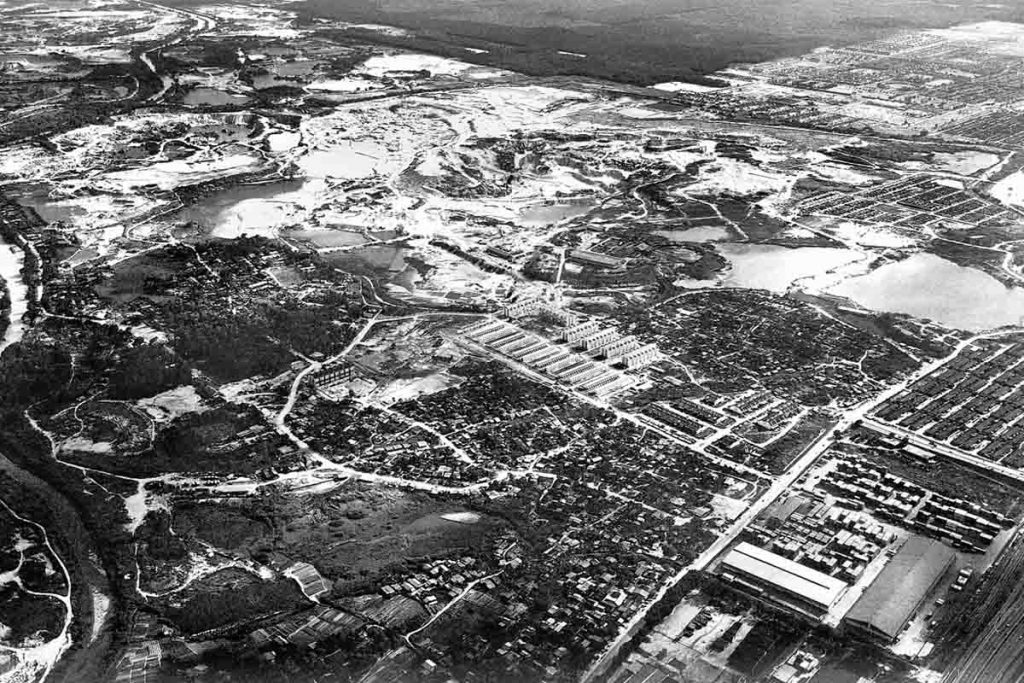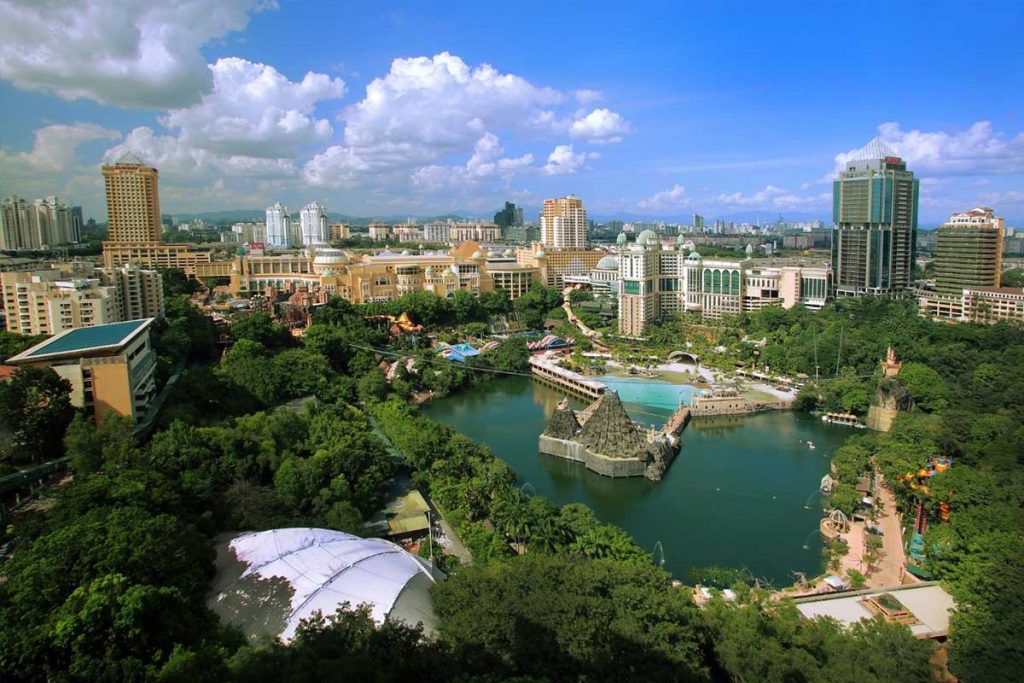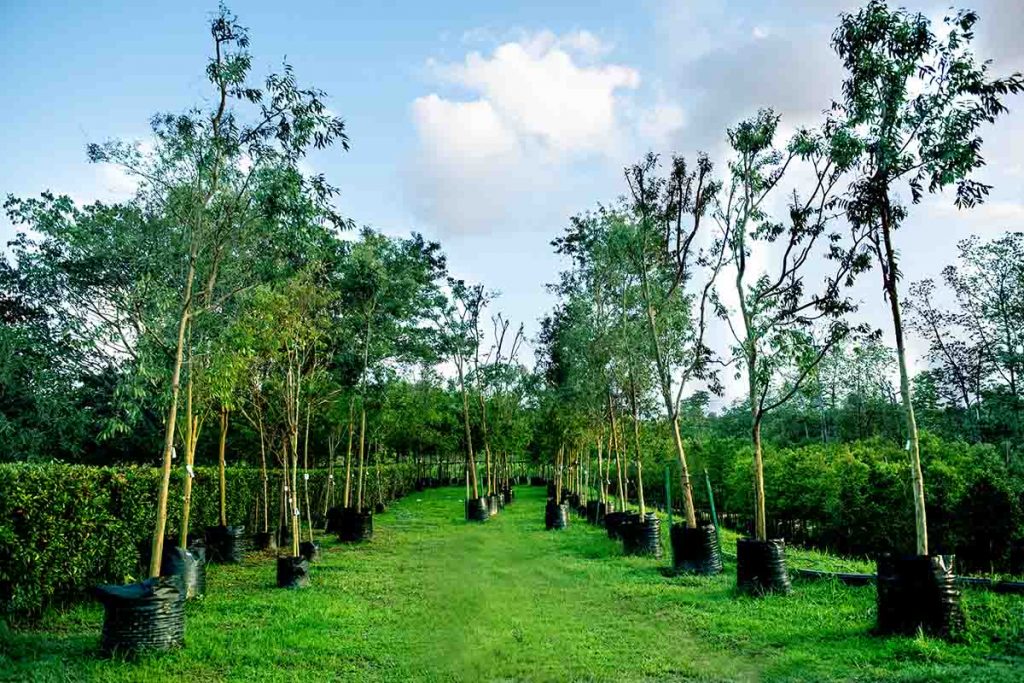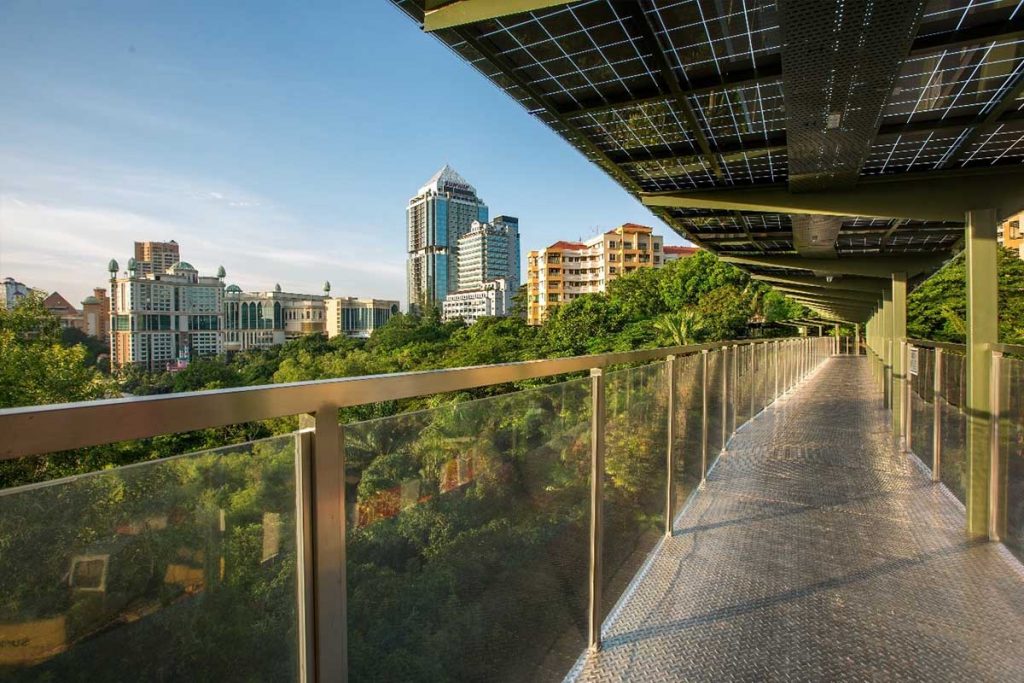A well-planned city with first-class green infrastructure is more resilient, sustainable and equitable to face strong environmental challenges posed by planet Earth.
Little do people know that trees can be beneficial, not just sustainably, but profitably as well – being two to three times more than the investment made in planting and caring for them.
Our Mother Earth is covered by large swathes of forests.
Similar to our primate predecessors – the apes, humankind has had a long-standing relationship with “tree-kind” throughout the eons of the Earth’s lifespan.
Over the last few centuries however, the production of mankind has multiplied at a rate of knots compared with our fellow tree compatriots. It is also common knowledge that as the population increases, the demand for accommodation has also significantly increased. This has led to rapid deforestation and increased urban development. Whilst this has somewhat solved accommodation problems and bolstered economies, it has also left question marks on the state of our environment.

Here are some quick facts – according to Mother Earth News, deforestation not only affects the climate by increasing the atmospheric level of carbon dioxide but also affects the environment by inhibiting water recycling, triggering severe flooding, aquifer depletion, soil degradation and the extinction of plant and animal species. Harking back to our school days will remind us of the importance of trees and their ability to photosynthesise – tremendously aiding in converting carbon dioxide into oxygen. Each tree that is cut down for urbanisation causes a decline in photosynthetic activity, resulting in higher levels of carbon dioxide in the atmosphere and consequently contributing to global warming and climate change.
This leads to the effects of urbanisation. According to Population Reference Bureau (PRB), urban development has revved up energy consumption, leading to the heat island phenomenon. This phenomenon has potential to change local weather patterns and weather downwind resulting in cities radiating heat back into the atmosphere at a rate of 15 to 30 percent less than rural areas. Urbanisation also affects the broader regional environments. In addition to the weather, it affects the runoff patterns for water by reducing water infiltration and subsequently increasing flood volumes.
And in our ever-growing world, the demand for urbanisation is higher than ever. According to the Food and Agriculture Organization of the United Nations (FAO), we are starting to see a major shift in population towards urban cities. Statistics reveal that more than 50 percent of the world’s population are living in towns and cities. By 2050, this number is expected to increase to 66 percent. This shift, predominantly in Africa and Asia, is heavily influenced by poverty and other related socio-economic factors.
The ramifications towards the city and its outer environment due to rapid development without any land-use planning strategy are extremely damaging in both long and short-terms, intensified further by climate change and increasing pollution, food insecurities, and other environmental and social circumstances.
But if not forest clearing, what then is the solution to meet the ever-growing demands of urbanisation?
HOW HAS SUNWAY CITY KUALA LUMPUR BECOME A MODEL IN TOWNSHIP DEVELOPMENT?
Instead of levelling woodland to build cities, another more viable, sustainable option is the use of degraded lands. Sunway City Kuala Lumpur (SCKL) is one such sterling example – an 800-acre land that was a desolate tin mining site, is now a model smart sustainable city.

From wasteland…

…to a smart, sustainable wonderland.
What used to be a wasteland has now become a wonderland – brimming with a groomed environment and lush landscape- promising a better tomorrow through integrated spaces where communities live, learn, work, play in a safe, healthy and connected environment.
The lungs of the city, however, are our Sunway Nurseries. In SCKL alone, we have planted 30,000 trees and palms. We have also planted trees ranging from 10,000 to 25,000 in our other developments across Malaysia.
According to a research piece by Gopalasamy Reuben Clements and Andrew Fan Jeffrey Sachs Center on Sustainable Development, they claim that more trees in our cities and the shade they provide can create cooler ambient temperatures for its inhabitants. Research has shown that the heat in a city depends on how much electromagnetic radiation we emit to and absorb from our surroundings. Without sufficient shade from pavement trees with wide canopies, vertical gardens, or rooftop gardens to shield our ground and buildings, townships will not have sufficient protection from the sun’s radiation, and people will not be able to effectively dissipate heat to cooler surroundings. Indeed, the shade provided by trees and plants can reduce our physiologically equivalent temperature by as much as 15°C, depending on which latitude we are at.
They also claim that another important way trees can reduce ambient temperature in cities is through the process of evapotranspiration, in which water is absorbed through roots and released into the air via tiny pores in their leaves. In addition, even a small tree no more than 4 meters high, can provide around 6kW of cooling, the equivalent of two small air-conditioning units – indicating the capacity that Sunway City Kuala Lumpur has to provide cooling power for the city.
Therefore, every single tree plays a part.

Sunway City Iskandar Puteri tree nursery – when one tree goes down, another takes its place.
If we want to do more, we need to repurpose vacant or abandoned land not for new buildings, but for the re-creation of forest areas, large enough to have an ecosystem of healthy growing trees, which can absorb a lot of water from the ground and release a lot of water into the air. They serve as a network of giant air conditioners so that we can create a city with a cooler micro-climate. Which is why we have taken steps to ensure that our nurseries will be ever green. For example, our nursery in Sunway City Iskandar Puteri is constantly invigorated with trees, thus when one is cut down during development, one or two more are planted back in its place. This not only helps restore the ecosystem, but enhances the environment.
Thus, the combination of urban trees and township formation in already-degraded lands can help mitigate some of the negative impacts and social consequences of urbanisation, making cities more resilient to these changes.
WHAT DOES THIS ALL MEAN?

Whilst Sunway has focused on a host of trends involving education, city development, healthcare, among others, sustainability has always been at the core and at the forefront of all that we do. Stretching back to the mid-80s at the conception of Sunway City Kuala Lumpur, Tan Sri Dr. Jeffrey Cheah AO has embedded sustainability in his business practices and city development, wanting to prove that profitability and sustainability are not mutually exclusive.
There are critics that see sustainability efforts as a negative factor to a company’s bottom line, especially when monetary investment towards sustainability initiatives needs to be made. On the contrary however, academic research and business experience point to the opposite. On a broader scale, commitment to sustainability and greenery has shown encouraging results that impact a company’s triple-bottom line.
“The concept of sustainability says there are actually three bottom lines to consider. First, the Economic – the financial impact on an individual’s income or spending, or on a company’s profit and loss; Environmental – the impact on the air, water, land and global climate; and Social – the impact on an individual’s happiness, health and productivity, or the impact on the community’s welfare,” said publisher and editor of The McMorrow Reports, Eileen McMorrow.
“Companies are realising significant cost savings through environmental sustainability-related operational efficiencies,” according to another study by the Harvard Business Review.
As mentioned earlier in the article, trees can help cool cities down and act as an air-conditioner, and in laymen’s term, remove the burden of air-conditioners and save energy and costs in city buildings. An article by The Times UK has cited a study stating that replacing air-conditioner with trees can save up to 22 million pounds in energy by reducing the use of air-conditioners by 13 percent.
In addition to that, it has also bolstered the value of our property and adds to tourism attraction.
One example would be our famed theme park – Sunway Lagoon. Its soil was initially too sandy, rendering it incapable of tree growth. However, our efforts to reinforce the soil and plant a high quantity of trees has resulted a mini-rain forest, allowing Sunway Lagoon as well as Sunway Resort a new ecosystem of flora and fauna, and simultaneously reinforcing Sunway as a premier tourist destination.

Integrating sustainability in city connectivity.
In addition, it has increased property value. During the 80s, skepticism in purchasing properties and residences at Sunway City Kuala Lumpur were high. Sandy lands, a former tin mining site, pot holes aplenty, and unstable foundations certainly could not lure prospects. However, with extensive rehabilitation and restoration efforts towards the landscape, aesthetics and liveability of the city, the perception has transformed and has resulted in a remarkable added value for our property division.
Environmentally, a large group of trees can act as filters for urban pollutant such as carbon monoxide or nitrogen oxides, as well as fine particles such as dust, dirt or smoke that fill the air by trapping them on leaves and bark. Trees can also mitigate the “heat island” effect, cooling cities by two to eight degrees Celsius, and helping urban communities to adapt to the effects of climate change. Mature trees can also regulate water flow and play a key role in preventing floods. To put things into perspective, one mature tree can intercept more than 15,000 litres of water per year; the size of one house water tank.
Socially, research shows that citizens who live and have access to urban green spaces are healthier – physically and mentally, as there is a correlation that strolling in green areas decreases high blood pressure and stress. This, in turn, contributes to the well-being of urban communities as well as increased productivity among our community.
These illustrations have shown that sustainability is not just a unique selling point, but also further emphasises that sustainability is not a detriment, but rather a complement to a company’s profit generation. Aligned with the United Nations Sustainable Development Goals and the vision of our founder and chairman Tan Sri Dr. Jeffrey Cheah AO, we strive to continuously grow as Malaysia’s model smart sustainable city and as a benchmark for other cities to follow.








